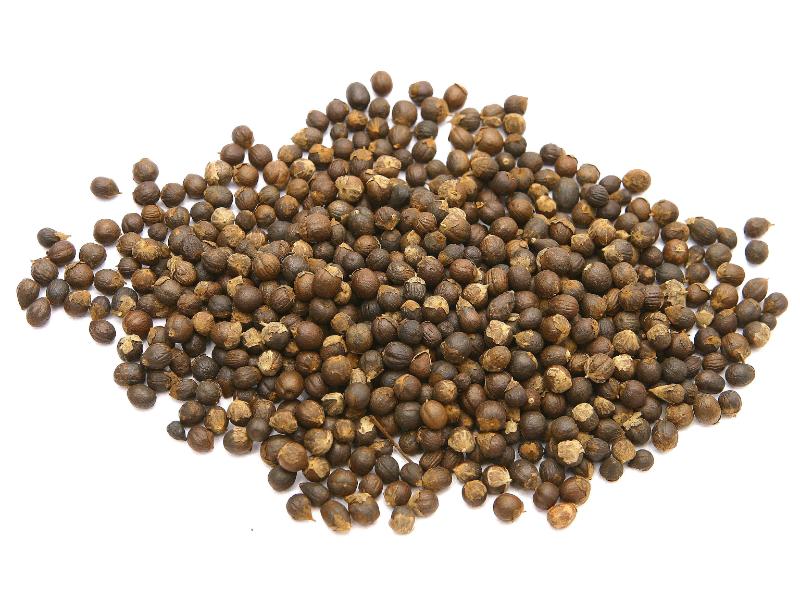Search in medicinals
Viticis Fructus
Vitex [fruit]
蔓荆子 〔蔓荊子〕 màn jīng zǐ

Alternate Chinese names: 万荆子 wàn jīng zǐ; 荆子 jīng zǐ; 蔓青子 màn qīng zǐ; 蔓荆实 màn jīng shí
Kingdom: Plant
Origin in PRC Pharmacopoeia: Vitex trifolia L. var. simplicifolia Cham.; Vitex trifolia L. (PRC Pharmacopoeia)
Origin in unofficial sources: Vitex rotundifolia L.; Vitex trifolia L.*; Vitex trifolia L. var. simplicifolia Cham.*
Use: Medicinal
Category: Exterior-resolving agents / Cool acrid exterior-resolving agents
Properties: Acrid; slightly cold.
Channel entry: Lung, liver, and stomach channels.
Actions and indications:
- Disperses wind-heat; clears and disinhibits the head and eyes: External contraction
exterior patterns with clouded head and headache or with red eyes and tearing. - Relieves pain: Many pain conditions, including head wind, impediment (bì) pain, toothache, and stomach pain.
Dosage and method: Oral: 6–12g in decoctions.
Product description: The dried fruit is spherical, with a diameter of 4–6 mm. The exterior surface is black, or brown-black, and slightly rough. It has four shallow equidistant longitudinal furrows. At the tip is a depression, and close to the fruit stalk is a white persistent calyx. The exocarp is thin, the mesocarp is spongy, and the endocarp is light yellow. In the center are four seed chambers, each with one seed. The fruit as a whole is light and hard and its oiliness is seen when it is cut open. It has a bitter taste and an unusual smell.
Quality: Clean, full, dark-colored, aromatic fruits are the best.
Production area: Shāndōng (biggest producer), Zhèjiāng, Jiāngxī, and Fújiàn, Japan, and Korea.
Back to search result Previous Next